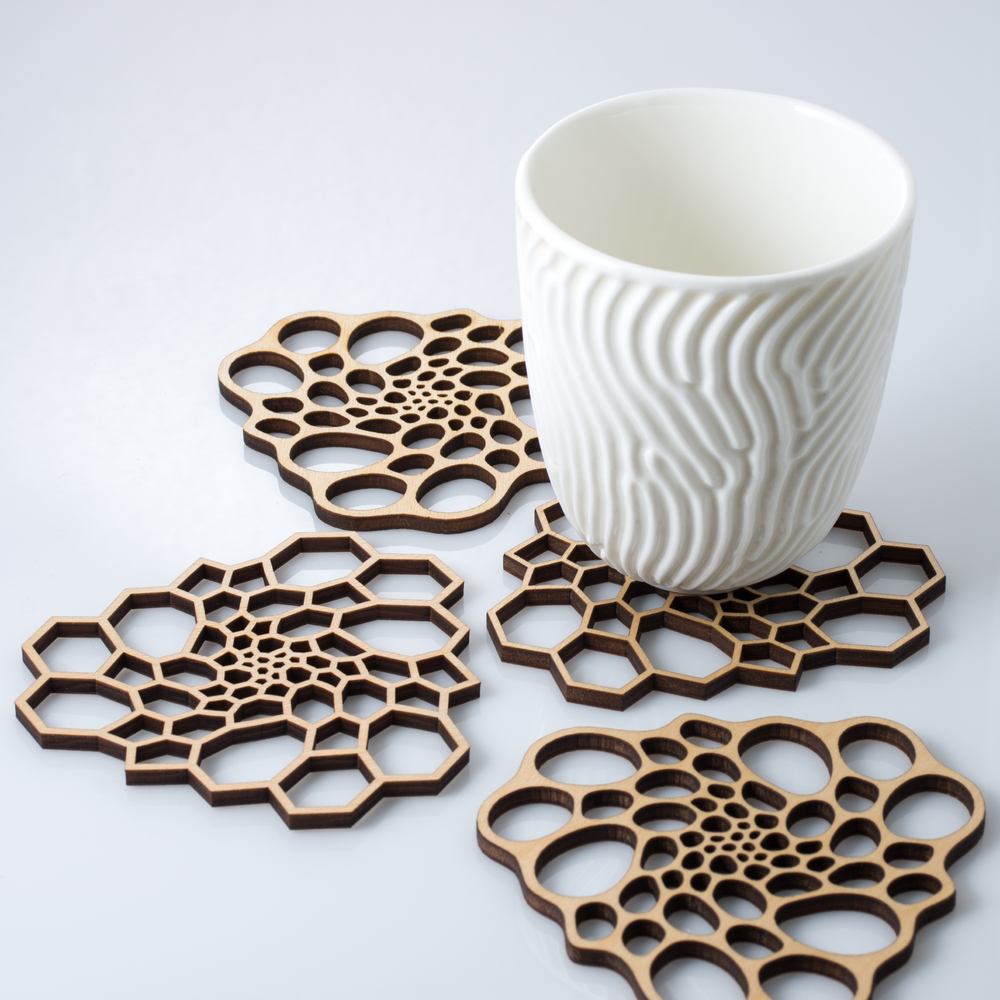How deep are the presents?
/As December rolls around again, thoughts turn to the Advent of Code, I mean Christmas, Jul, Hanukkah, Kwanzaa, Ōmisoka, Newtonmas, Solstice, Dongzhi, or whatever you like to celebrate at this time of year. The end of 2021 is arguably sufficient cause for celebration on its own. Just don’t let your guard down in 2022!
Now, wherever you are, light the fire, chill out in the shade, pour yourself a glass of what you fancy, and check out this list of nerdtastic gifts for your favourite geoscientist, retired geoscientist, or geoscientist-to-be.
Actual rock
When giving to a geologist, you can’t go wrong with actual rock. Henk Kombrink and Kirstie Wright have been preparing and shipping beautiful pieces of North Sea core for several years now. These things cost millions of dollars to bring to the surface! Seriously useful for teaching, but also just lovely to look at.
You also can’t go wrong with soap. Geologists are filthy.
Look up not down
Geologists usually look down, but I got myself a telescope this year and I love it. I really appreciate the quiet focus of picking my way around the night sky, and the mind-bending experience of gazing at a galaxy of 100 billion stars whose photons have been traveling through space since the Oligocene. Highly recommended for any scientist! But the question is… out of the 100 billion different telescopes out there, which one do you get?
I think I’ll write a more detailed post about this soon, but for now I’ll keep it brief. If you can afford to spend more than about $250, get a simple reflector (aka ‘Newtonian’) telescope with a 6- to 10-inch (150 mm to 250 mm) mirror on a simple, non-motorized alt-azimuth mount. This combo is often called a ‘Dobsonian’, or Dob for short, and I think it offers the best value, and the best experience, for the beginner. Here’s one (right).
On the other hand, if you’re looking to spend less than about $250, get binoculars instead — something like 8×42 or 10×50 is ideal. Or split the difference with these very nice Nikon Prostaff 5 10×42. The beauty is that when geologists are allowed back in the field again, these bins can double as field glasses.
Why are scientists always pictured with glasses?
I don’t know but I do know that I love these laboratory-inspired drinking vessels from PTWare and these even more authentic-looking (not to mention somewhat cheaper) ones from a restaurant trade site.
You can also go with the novelty look, like this stratigraphic glass — or this one on the right featuring women of science, including the astronomer and (callback!) first female salaried scientist, Caroline Herschel, and none other than (segué!) rock botherer Mary Anning.
The obligatory books section
There is no shortage of books about Mary Anning, but this new picture book for kids stood out. I have not read it, but judging by its reviews, people like it a lot: Mary Anning by Maria Isabel Sánchez Vegara & Popy Matigot. It is one in a new series of factual children’s books from Francis Lincoln books called Little People, Big Dreams — there are lots of scientists in the list along with Anning.
For the grown-ups, there are a lot of interesting-looking new books on my watch list. It seems geology books are hot again!
How the Mountains Grew: A New Geological History of North America, by ex-USGS geologist and astronomer John Dvorak (Pegasus, 2021). Rated 4.4 on Goodreads and 4.3 on Amazon.
A Brief History of Earth: Four Billion Years in Eight Chapters by Harvard natural history professor Andrew Knoll (Custom House, 2021). Rated 3.9 on Goodreads and 4.5 on Amazon. 🤷
Song of the Earth: Understanding Geology and Why It Matters, by geoscientist and educator Elisabeth Ervin-Blankenheim (OUP, 2021). This looks really nice but it only came out on Friday so no reviews yet.
Atlas of the Invisible: Maps and Graphics That Will Change How You See the World, by James Cheshire & Oliver Uberti (WW Norton, 2021) is not a geology book, but it’s about maps and therefore awesome. I have their previous book, Where The Animals Go, and it’s both beautiful and fascinating.
A Natural History of the Future: What the Laws of Biology Tell Us about the Destiny of the Human Species by ecologist Rob Dunn (Basic Books, 2021) — and the winner of the Longest Subtitle For A Book That Did Not Need A Subtitle But Everyone Has Them These Days award. Good cover though.
Last thing
I know it’s very 2021, but don’t you dare buy anyone an NFT. Those things are ridiculous.
Okay. You made it to the bottom, did nothing grab you? Here’s a hundred more ideas…
2019: This post is the key to the presents (underrated pun, surpassing even 2017)
As usual, if you want to share something wonderful you think a discerning geologist would enjoy, please let us all know about it in the comments!
Unlike most images on agilescientific.com, the ones in this post are not my property and are not open access. They are the copyright of their respective owners, and I’m using them here in accordance with typical Fair Use terms. If you’re an owner and you don’t like it, please let me know.

















































 Except where noted, this content is licensed
Except where noted, this content is licensed